Wine Spectator’s First Vintage Report Card for 2008: Who Does it Serve? Does it Matter?
By Lenn Thompson, Founder and Editor
Last night over on Facebook, I learned about Wine Specator's first 2008 vintage report card, which includes an A grade for the Finger Lakes and a B for Long Island. A brief comment discussion ensued and I thought that I'd write a bit about it this morning.
I have an email in to Mitch Frank, who contributed to the piece and who I know writes about Long Island for the publication, because I'm curious to learn how these grades are calculated. On the surface, it looks like winemaker and vineyard manager interviews are the basis, but is that it? I don't know, so I'm trying to find out.
But assuming that is the case, I think that giving regions vintage grades, especially so soon after harvest, is extremely problematic and not all that useful to the consumer or anyone else, except maybe the PR and marketing folks. These grades are problematic and maybe shoudl be taken witha grain of salt for a few reasons.
First, while I know that winemakers and vineyard managers wouldn't actually lie, they do need to sell the wines from the 2008 vintage and they might soften or downplay the negative parts of the year. Of course, if the grades are also based on degree day data and other objective measures, this is less of an issue.
Second, I think that it's silly to grade a vintage when the wines are barely even made. For some of the long-hanging reds on Long Island, we're not even a month past harvest yet. These grades are clearly meant to be an early indicator of wine quality, but are they?
Which leads me to my third point. It's difficult enough to give a grade or rating to an individual wine. There is bottle variation (for a number of reasons) and yes, they are subjective. But at least those are for a single wine. Giving a grade to an entire region, even one as geographically small as Long Island, is incredibly hard to do well. From vineyard to vineyard there is so much variation in terms of weather, temperature, etc. that these grades really are broad generalizations at best. The unfair generalization is probably even greater for the Finger Lakes just because it's a larger region with vineyards lining several lakes. According to Bob Madill from Sheldrake Point on Cayuga Lake, who was quoted in the WS story, "Vineyards that surround the three major lakes are at differing
elevations, aspects and are subject to varying rainfall. This is not a
small detail, particularly in years that are dry or that have winter
temperature episodes."
I've also heard that certain riesling vineyards were harvested a full three weeks before some others. Can any single grade/rating/score cover that variation?
I've heard many great things about the 2008 growing year in the Finger Lakes, so this isn't about whether or not the region 'deserves' an A. Winemakers up there have learned how to make great wines even in lesser vintages. Many expected 2007 to be a flabby year for riesling, and in some cases it was. But there were still terrific wines, with good acidity, made that year.
One final point before I end my rant: If these grades are meant to be tools for consumers, then why was Long Island given a B? I can only assume the B is the result of region-wide yields being lower (up to 75% or more for some varieties in some vineyards). But almost across the board, I've been told that sugar and phenolic ripeness was very similar to 2007, which was lauded as a banner year. If the wine quality is as good, or close, to 2007, is it really a "B" vintage? Or is it an "A" vintage with fewer bottles available?
This is the same problem that I have with people/shops/critics who rely on numeric or letter grades and don't look at the context around them. Yes, yields were down on Long Island, but from what I hear (and I already covered the potential for bias among sources) there are going to be some outstanding wines from 2008, just fewer bottles. So are these grades about the quality of the vintage or the quality and quantity?
I doubt the consumer really cares about the quantity. So who are these grades really for? I wonder if the primary audience here is the wineries themselves (and their PR people) so they can start talking up the wines long before they are released. Is that of benefit to anyone else?
Many American wine consumers crave scrores and grades. I get it. But I thnk it would be great if publications, both in old and new media, could be smarter about it.





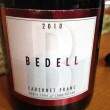
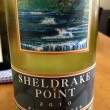

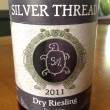





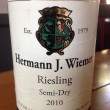

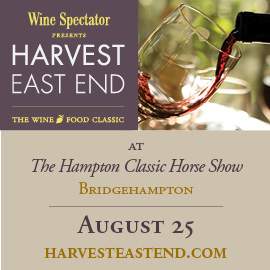
Well said and I agree. If I remember correctly, 2005 LI got a bad grade from WS. Yet some made their best reds ever.
Without casting any comments on your comments or the Wine Spectator’s article. A way to really see the credibility of WS would be to see how previous ratings compared to actual results in the bottle, as you kind of did above for 2005.
An A for the Finger Lakes? From what I can tell, it was a good summer but can you call it a perfect one?
But what is perfect? 2007 was hot and dry in the Finger Lakes, so some reds might outshine the whites in general. Some winemakers took 2007 and made good rieslings, others struggled.
I guess what is difficult to figure in terms of young regions like these is what the grades reflect in terms of categorical judgments. Heck, I know an A in Bordeaux refers to the grapes used in the blends there, or in Burgundy it’s all about pinot. If the Finger Lakes got an A for 2008, is it just based on riesling potential or does it speak to the numerous amount of varieties being grown? Something tells me you could try and grade riesling potential to some degree, but to speak to all concerns is impossible.
Your argument is based on one very important assumption. An assumption you implicitly touch on.
‘This is the same problem that I have with people/shops/critics who rely on numeric or letter grades and don’t look at the context around them.’
Saying that just about everyone (unless I’m mistaken, you seem to cast your net fairly wide) slavishly relies on vintage ratings without taking other factors into account is erroneous and unfair. Furthermore, you offer no evidence to support that assumption. You’d probably get a fair number of people to agree with you, but that’s not evidence either. While I agree with you to a certain extent on substance, in spirit your analysis sorely misses the point.
Vintage ratings are incredibly stupid and decremental to the whole industry, especially VINTAGE CHARTS. In the end some of the greatest wines I’ve tasted came from “bad years” and some of the worst wines came from “great years”. Variation in any vintage can be huge and to condemn a whole vintage is just plain silly.
On top of this, as a wine consumer, what am I to do with this info? Since I won’t be buying the wine for 2 more years, in many cases, and there will be plenty of actual tn’s leading up to that point, why not just write an article on weather and impressions of the vintage, rather than putting a silly grade on the vintage as a whole.
Dumb, dumb, dumb…
I agree there will always be variations from vineyard to vineyard within a region due to many factors including microclimates, sporadic showers, hail, vineyard management decisions, etc. However,the overall weather patterns in a region will generally determine the potential for the maturity and balance of region as a whole - in a given year.
In other words, if we have a generally poor growing season due, for example, to extended cool weather or too much rain, we will do all we can to minimize the lack of maturity such as severe crop thinning and enhanced cluster exposure. But, the overall maturity, intensity of flavors, acid balance and sugars will generally be somewhat inferior to a good to excellent growing season. Thus the report card is intended to be an indication of the potential quality of the vintage. As you point out, in the Finger Lakes as well as on Long Island, individual vineyards and winemakers can still make many outstanding wines in a less-than-ideal year because of our ability to manage the crop in the vineyards throughout the season and our many cellaring techniques.
However, a favorable growing season is the best. I would agree that an A- rating for 2008 in the Finger Lakes is about right.
We need to get writers out into the vineyards more frequently to actually see what we see. We welcome you always!
Echoing the above, a vintage rating can show the consumer what kind of challenges a winemaker faced in that year. The mark of a good producer is good wine no matter what weather is thrown his/her way. A B for Long Island sounds about right, too. Everyone had to spray to combat fungus — expensive and time consuming — some just didn’t make it, others spray regularly just because they can. Some wines were made out of mush.
The issue of vineyard location is a major obstacle in trying to pin down one grade for the entire FL appellation. The truth is — and some growers and winemakers are loathe to admit it — that first, dreadful week of October literally shut ripening down in some places. And yet, on the east side of Seneca especially, the strong bounceback allowed the vines to kick back into photosynthesis. It was fascinating to walk among the vines in differing locations to see how wildly the divergent the reaction was; you could see it in the leaves.
So while some winemakers declared in early October that many varieties had essentially hit a wall, others were rejoicing that warmer weather immediately followed to rescue ripening. Can any consumer have any clue about which scenario played out prior to buying an individual bottle?
I’m also a little surprised not to hear more talk of the botrytis this year. This was a botrytis year if ever there was one. That means different things for different growers and winemakers. Johannes Reinhardt welcomed the challenge of summer rains by deciding to make his first Riesling TBA. The early TBA I’ve tasted from Anthony Road is outrageous. 39 brix for goodness sake, with some parts of the crop averaging 42 brix. Those bottles (375ml) could sell for more than $100 apiece.
And yet some winemakers dread any rot. They think it can ruin red crops and they don’t thin it from white crops, which makes for sweeter wines. Which is fine, if not optimal. So who can really rate this vintage without a wider assessment of the approach to a heavy botrytis year?
All of this is why I’m a proponent of MORE MORE MORE information on the bottle. Pick up a bottle of Calera Pinot to see what I’m talking about. Savvy consumers learn next to nothing from basic labels.
Lenn, great post. WS is actually doing our region a service by paying attention; I’m just not convinced they’re paying attention to the right things.
The idea that you can drink great wine from a poor vintage says absolutely nothing about the overall veracity and usefulness of vintage ratings.
Every rule has an exception. And if we tossed out every rule that had one, we’d soon live in a society with neither rules nor exceptions. And we wouldn’t want that.
Certainly some producers due to money, geographical situation, etc. can do rather well in a bad vintage. Also, what may be bad of Pauilliac may be great for Barsac.
On average though, vintage matters for the vast majority of wine produced. You can’t tell me that a cold summer in Northern California doesn’t affect most of the wine produced in Northern California is some measurable and consistent manner.
I pay attention to vintage data. Wine lists are drawing from every corner of the earth. Who can keep track anymore. I no longer even recognize most of the offerings. On one hand, that’s wonderful. On the other, buying wine has become more or less a crap shoot. When I’m scanning the by-the-glass list in a restaurant I’m apt to rely on whatever information I have at my disposal, including any vintage ratings I’ve committed to memory.
Nice job of pointing out how utterly stupid vintage ratings are. They are misleading on so many levels it is almost shameful that WS even tries to do them.
Tish,
I think your distaste for vintage ratings is over the top, to be honest. As Art Hunt says, there are some general indicators that can be helpful to consumers. And as much as I like specific information, I fall back on vintage ratings for a variety of my wine purchases (for example, I love Brunello and seek out 1997 and 2001 but avoid most 2002).
I’m simply pointing out that WS is trying to offer a helpful service. We’re offering ideas on how to make the information more helpful for consumers.
A few years ago a friend of mine asked me what I do with a vintage charts. Below is the response I gave:
Well I usually refer to this when “buying blind”. At this point in my buying career, I have some go-to producers that I buy regularly for which I don’t need a score or rating. Ridge Zinfandels in Sonoma are an example, as is anything by Hartford (aka: Hartford Court) from Sonoma. I love their wines and buy them whenever I can no matter what.
But there are some producers I’ve never tried or some regions I’m not all that familiar with. Want to take a chance on a Côtes de Beaune Pinot from Burgundy? If you see both a 2004 and 2005 on the shelf, you’ve got a better chance to pick a winner in 2005 (90-94 rating vs 85 rating). This won’t guarantee you success, because any wine can be great in a year that was average (85) or any wine can be poor in a year that was great (90-94). But just like gambling, it’s all about the odds.
I also use this when I want to stock up on wines. Right now I’m running low on Oregon Pinots, so I need to build up a little. I buy Oregon Pinots every year no matter the score, but for loading up, I’ll hold off on the 2003’s (86 – 88 ratings) and wait for the 2004’s and 2005’s (rated low to mid 90’s).
In short, this is not a guaranteed buying map; it is just another tool to help you sort out your purchases.
Evan, I understand your points. I had started typoing up a longer comment, but afte that got caught in some cyber spin cycle, I left a shorter, snarkier one. Essentially, I take affront to the idea that WS is deigning to “grade” the 2008 vintage when the yeast is practically done doing its job.
Sure, go out and talk to growers. Get quotes, recollections, anecdotes, but when a WS reporter gathers trade assessments solely for the purpose of rendering a premature school grade, what is really going on is not consumer edification, but rather Spectator self-puffery.
If WS wants to quote Art Hunt saying it’s an A-, it is much more valid, and very different. Better yet, why doesn’t someone gather vintner/grower one-word grades. Who’s going to be the first to declare the 2008 Finger Lakes vintage as “woohoo!”
Vintage ratings are incredibly stupid and decremental to the whole industry, especially VINTAGE CHARTS.
I agree. They’re just too much of a generalization.
Anyway, the WS should be seen for what it is: a lifestyle magazine. It’s not aimed at serious wine drinkers.
Exile,
There seems to be some agreement on this board regarding the idea that vintage grades — especially this soon after fermentation — are too general. But let me address two points.
1) When consumers don’t have access to specific site information — and they almost never do — and when consumers have not had time to research the impact a certain vintage has had on an individual producer, then vintage assessments can be helpful. I’ll go back to the Brunello example; Montalcino is not a small appellation, and while I’d love to know how each part of the appellation was treated by weather, I’ll rely on overall vintage assessments from time to time.
Likewise with the Finger Lakes, it’s certainly fair to say that 2005 was a strong year for reds and 2007 is likely to go down as the best in a generation. Does that mean each producer will offer the same quality? Certainly not. And you can bet that a Cab Franc lot on Keuka Lake did not have the exact same conditions as did one on the east side of Seneca. But as general rules, 2005 and 2007 stand out in quality for FL reds.
My complaints about making a 2008 vintage assessment are:
1) It is very, very early to do so.
2) Making an assessment relies heavily on the word of people who need to sell wine.
And, as I’ve mentioned repeatedly, I think we could all benefit if producers offered much more information to the public. I’d love to see it on the back label, but it can be offered in many different formats.
Hmm, that was a bit sloppy and list heavy.
Exile (and others), I’d add that while I have my complaints with WS, I’d certainly say it’s a serious wine publication. I’m guessing you and I share plenty of common ground with our concerns about the magazine, but I’m not sure why you say it’s not a serious publication.
“I’ll go back to the Brunello example; Montalcino is not a small appellation, and while I’d love to know how each part of the appellation was treated by weather, I’ll rely on overall vintage assessments from time to time.”
Brunello is probably an example in which vintage ratings *do* make sense. All the wines are made from the same grape and they’re all vinified in a similar fashion.
But I think ratings *only* make sense in a context such as this. The Wine Spectator does a grade for the entire Central Coast? So we’re supposed to think that it applies to pinot, chardonnay, syrah, sauvignon blanc, and rhone varietals? I don’t see the value in averaging all of that together.
“I’m not sure why you say it’s not a serious publication. ”
There’s too little appreciation of subtle, terroir-driven wine. And, also, I think they just don’t do that good a job even within the parameters of user-friendly wine.
Exile,
Great point regarding Brunello, and it takes us back to one of the initial questions in the discussion: Are we assessing the vintage solely based on Riesling? Is it aromatic whites in general? Perhaps aromatic whites and cool climate reds? Or all wines?
I tend to assume that a vintage grade will be focused on a region’s strengths, but it’s not specified.
Exile,
Great point regarding Brunello, and it takes us back to one of the initial questions in the discussion: Are we assessing the vintage solely based on Riesling? Is it aromatic whites in general? Perhaps aromatic whites and cool climate reds? Or all wines?
I tend to assume that a vintage grade will be focused on a region’s strengths, but it’s not specified.
If I may add my thoughts…Niagara USA would just be happy to get any vintage grade by wine spectator.
That being said, most growers, I assume, would judge their particular vintage the day they harvest. A simple taste of the grapes, skins, pulp and seeds will pretty much be the only measure necessary of how good the year was if he or she knows their vines.
So I do believe you can already reach a conclusion of the vintage quality, but it will likely vary dramatically throughout each sub-region.
And speaking of botrytis, it was a good year for anyone who had the pleasure of pulling dehydrated grapes from moldy bunches for 12 hours just to get a bottle or two of $100 TBA.
Bryan,
I had such a pleasure, pulling grapes for TBA at Anthony Road. But they’re expecting many more than just a couple of bottles!
Dave Whiting of Red Newt offered this analogy, which certainly supports your take: He says an old-school photographer had to rely on a darkroom for the actual photograph to appear, but he or she knew the moment it was taken whether it had the potential for greatness. Makes sense to me.